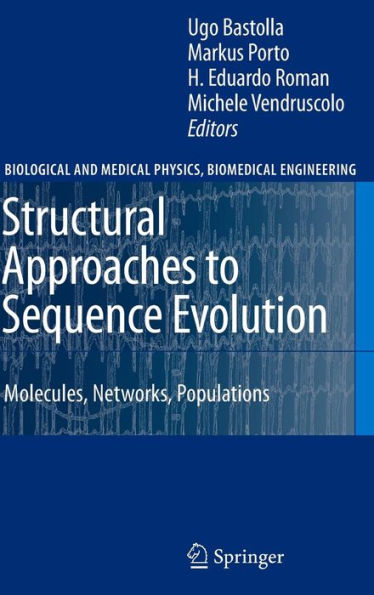Structural Approaches to Sequence Evolution: Molecules, Networks, Populations
Structural requirements constrain the evolution of biological entities at all levels, from macromolecules to their networks, right up to populations of biological organisms. Classical models of molecular evolution, however, are focused at the level of the symbols - the biological sequence - rather than that of their resulting structure. Now recent advances in understanding the thermodynamics of macromolecules, the topological properties of gene networks, the organization and mutation capabilities of genomes, and the structure of populations make it possible to incorporate these key elements into a broader and deeply interdisciplinary view of molecular evolution. This book gives an account of such a new approach, through clear tutorial contributions by leading scientists specializing in the different fields involved.
1101510167
Structural Approaches to Sequence Evolution: Molecules, Networks, Populations
Structural requirements constrain the evolution of biological entities at all levels, from macromolecules to their networks, right up to populations of biological organisms. Classical models of molecular evolution, however, are focused at the level of the symbols - the biological sequence - rather than that of their resulting structure. Now recent advances in understanding the thermodynamics of macromolecules, the topological properties of gene networks, the organization and mutation capabilities of genomes, and the structure of populations make it possible to incorporate these key elements into a broader and deeply interdisciplinary view of molecular evolution. This book gives an account of such a new approach, through clear tutorial contributions by leading scientists specializing in the different fields involved.
109.99
In Stock
5
1

Structural Approaches to Sequence Evolution: Molecules, Networks, Populations
367
Structural Approaches to Sequence Evolution: Molecules, Networks, Populations
367Hardcover(2007)
$109.99
109.99
In Stock

Product Details
| ISBN-13: | 9783540353058 |
|---|---|
| Publisher: | Springer Berlin Heidelberg |
| Publication date: | 08/17/2007 |
| Series: | Biological and Medical Physics, Biomedical Engineering |
| Edition description: | 2007 |
| Pages: | 367 |
| Product dimensions: | 6.10(w) x 9.25(h) x 0.03(d) |
About the Author
From the B&N Reads Blog
